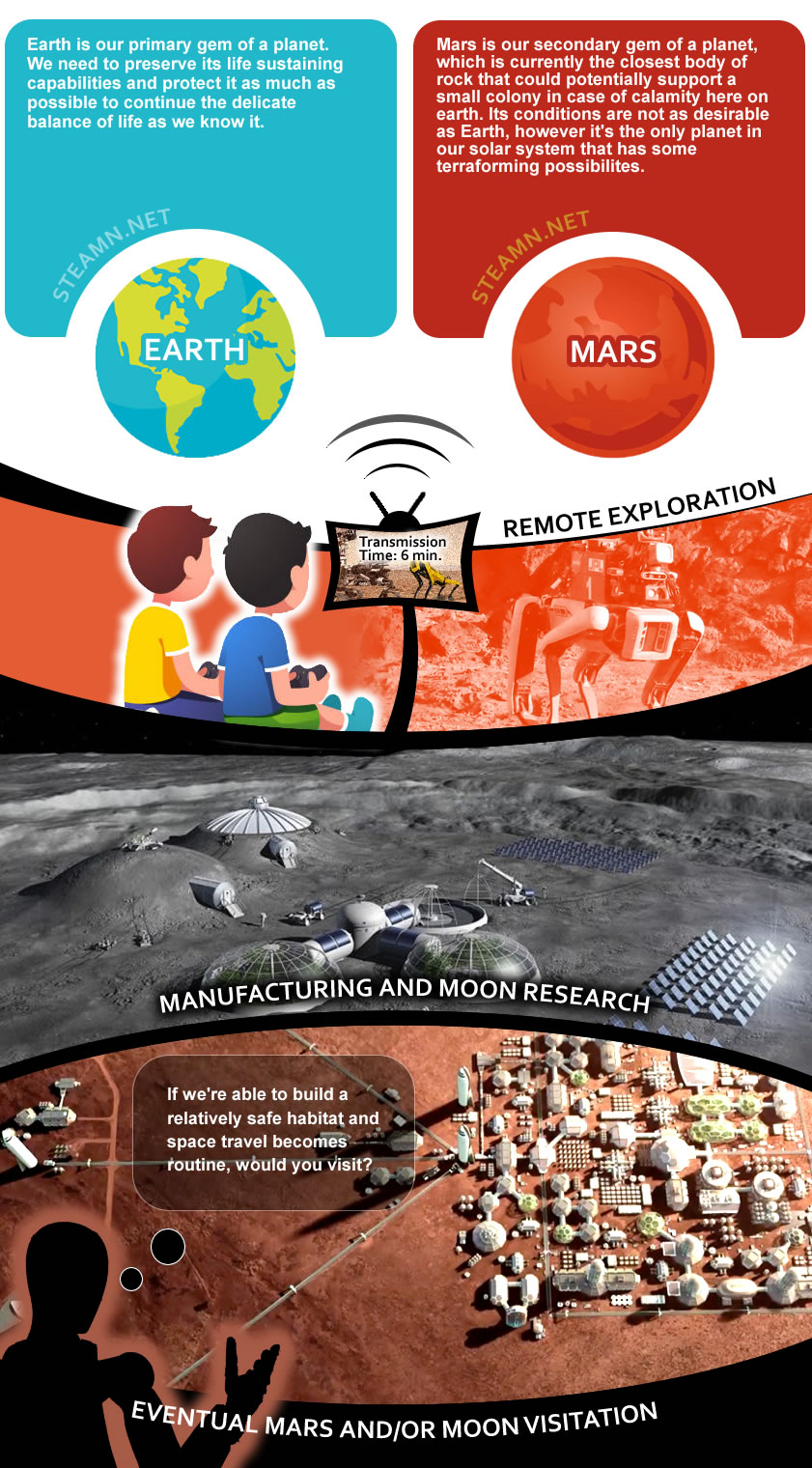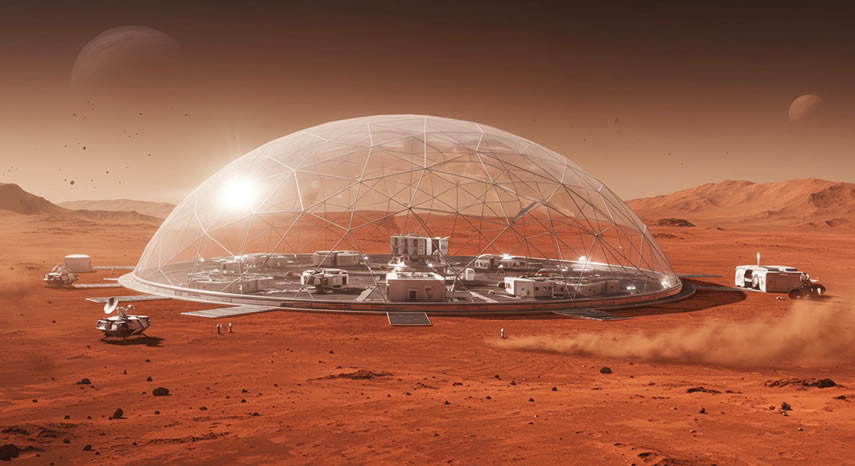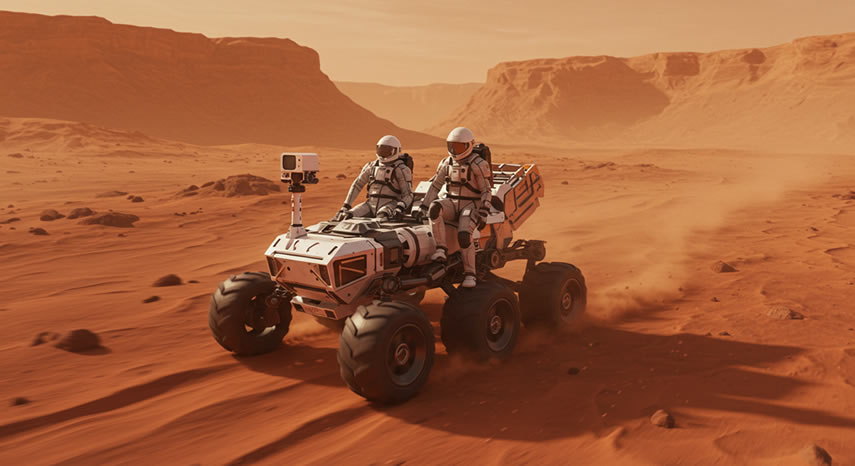STEAM'N Lesson Plans - Discovery Based Education and Lesson Plan Marketplace
Mars Exploration and Research- Free Lesson
Please rate this Lesson on one to five scale
Overview:
Did you know the first people to live on Mars may have already been born? There are many organizations throughout the world working hard to plan a Mars visitation however there is a lot of work to be done to make this a reality.

Related Video:
Age Level:
11-1314-18
Lesson Type:
Traditional
Objective:
After completing the lessons in this unit, students will be able to:
1) Explain the risks/rewards of a Mars visitation. Is spreading the light of human consciousness a directive humanity should pursue.
2) Examine personality traits required of the first Martian explorers
3) Identify the physical characteristics of Mars, including the location, climate, geographical features, atmosphere, and surface
4) Discuss spacecrafts that have explored Mars and what information we learned about Mars from them.
5) Identify and understand how and what habitation would need for human survival.
6) Generate high-quality questions requiring high-level thinking and skills in order to answer questions
7) Integrate information presented in different media or formats (e.g., visually, quantitatively) as well as in words to develop a coherent understanding of a topic or issue
8) Conduct short, as well as more sustained research projects, utilizing an inquiry-based research process, based on focused questions, demonstrating understanding of the subject under investigation
9) Draw evidence from literary or informational texts to support analysis, reflection, and research
10) Discuss wearable spacesuit ideas that could potentially reduce radiation levels to a point where long-duration space travel and extra-planetary missions become significantly safer for astronauts.
11) Design and create ideas based on research
The Role of AI and Advanced Materials
Material Optimization:
AI can accelerate the discovery and design of novel materials by simulating and optimizing composite structures at the atomic level. These simulations can explore thousands of candidate materials and configurations to find those that balance effective shielding with low mass and high durability.
Adaptive and Smart Materials:
Future research may yield "smart" materials that can adapt their properties in response to radiation or other environmental factors. AI-driven systems could potentially monitor the integrity of the shielding in real time and make adjustments (such as deploying additional layers or activating self-healing mechanisms) to optimize protection.
Nanotechnology:
Advances in nanomaterials might allow for the development of ultra-light, highly effective radiation shields. For example, engineered nanocomposites could potentially scatter or absorb high-energy particles more efficiently than traditional bulk materials.
Why Mars?
Humans have an unlimited capacity for curiosity. We are always looking for a new place to explore. Since the dawn of time, people have looked up at the sky and wondered what was out there. Today, as our natural curiosity continues to persist, humans are looking for the next great adventure. Why would we choose Mars? Are you ready to venture together into the next great unknown territory?
To Do
1) Brainstorm these questions together:
2) Why would people want to go to Mars?
a) What are some challenges we will face?
b) Create a three-column table. In the first column, list everything you know about Mars. In the second column, list everything you’d like to learn about Mars. And in the third column, list the new things you learn throughout this unit.
c) Research time! Using websites, books, and videos, find out why Mars would be a good choice for a human colony. Make sure you also research some of the dangers involved.
d) Create an advertisement to persuade volunteers to join the Mars Colonization movement. Include the risks they may face. Your ad may be formatted for a magazine or it may be a television commercial.
Discover More...
^
Copyright 2022 STEAM'N Lesson Plans - Discovery Based Education and Lesson Plan Marketplace.


